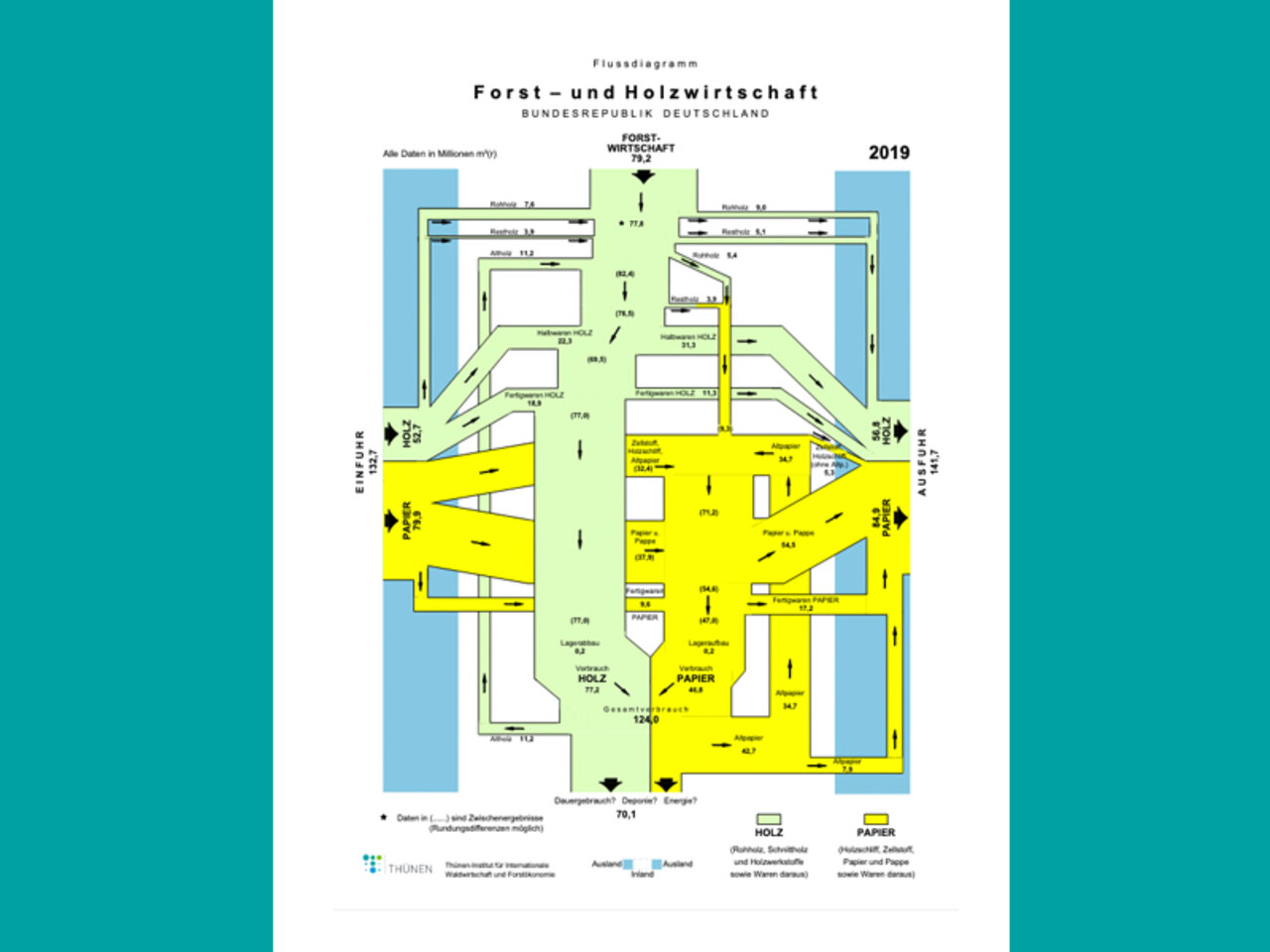Project
Wood balances

Compiling of "wood balances" (general balances, trade balances) for Germany, the EU, and its member countries
Annual fellings contribute about the fourth part of the total supply of all wood based products in Germany. Imports account for more than 50 per cent and hence the largest part, as our annual calculations of the wood balances for Germany show. Where does the rest come from?
Background and Objective
Our analysis of wood balances aims at showing total supply, use and consumption of all wood and wood based products. Hence, it illustrates the relation of domestic production, foreign trade and use and provides insights in market structures and markets developments. As such wood balances are an important basis of information for actors in politics and industry.
Approach
On the supply side, our wood balance comprises the annual fellings, the quantity of domestic recovered paper and recovered wood and the imports. The use side shows the exports and domestic consumption. Changes in stocks of wood products are also recorded. Data sources are official statistics, statistics from industry federations and scientific studies. Data of annual fellings are taken from Thünen-Recalculation of Wood Fellings, beginning with the year 1995.The general time series of our data start in 1950.
Wood and wood based products comprises all wood based raw materials as well as semi-finished and finished products. For the calculation we use the unit cubic meters of roundwood equivalent (m³(r)). This unit is a theoretical figure which expresses how many units of roundwood have been used for the manufacturing of a unit of a specific wood based product. Consequently, losses of wood during processing are considered.
Preliminary Results
Since 1950, the total wood balance of Germany (i.e. the use volume as well as the supply) has almost continuously grown from 30 million m³(r) in 1950 up to about 270 million m³(r) actually. This is due primarily to the increase of the foreign trade. Foreign trade accounts for about one half of the total balance.
The balance volume in 2020 accounts to 268.2 million m³(r), which equals an increase of 0.9 % compared to 2019. In 2021 a further increase of 1.2 % to a total of 271.8 million m³(r) can be reported according to preliminary data.
Apparent domestic consumption increases in 2020 about 1.5 % to 125.8 million m³(r) compared to 2019. 2021 shows a decline of 0.7 % to 124.9 million m³(r). In 2020, 62.5 % of domestic consumption accounted for wood products and 37.5 % accounted for paper products.
Links and Downloads
www.thuenen.de/en/institutes/forestry/figures-facts/wood-balances
Thünen-Contact

Duration
Permanent task 1.2001
More Information
Project status:
ongoing
List of Publications
- 0
Weimar H (2020) Holzbilanzen 2017 bis 2019 für die Bundesrepublik Deutschland. Braunschweig: Johann Heinrich von Thünen-Institut, 37 p, Thünen Working Paper 153, DOI:10.3220/WP1598873344000
- 1
Weimar H (2018) Holzbilanzen 2015 bis 2017 für die Bundesrepublik Deutschland und Neuberechnung der Zeitreihe der Gesamtholzbilanz ab 1995. Braunschweig: Johann Heinrich von Thünen-Institut, 26 p, Thünen Working Paper 101, DOI:10.3220/WP1533821115000
- 2
Weimar H (2016) Holzbilanzen 2013 bis 2015 für die Bundesrepublik Deutschland. Hamburg: Johann Heinrich von Thünen-Institut, 25 p, Thünen Working Paper 57, DOI:10.3220/WP1463058733000
- 3
Weimar H (2014) Holzbilanzen 2012 und 2013 für die Bundesrepublik Deutschland. Hamburg: Johann Heinrich von Thünen-Institut, 37 p, Thünen Working Paper 31, DOI:10.3220/WP_31_2014
- 4
Seintsch B, Weimar H (2013) Holzbilanzen 2010 bis 2012 für die Bundesrepublik Deutschland. Hamburg: Johann Heinrich von Thünen-Institut, 37 p, Thünen Working Paper 9, DOI:10.3220/WP_9_2013
https://literatur.thuenen.de/digbib_extern/bitv/dn052410.pdf








